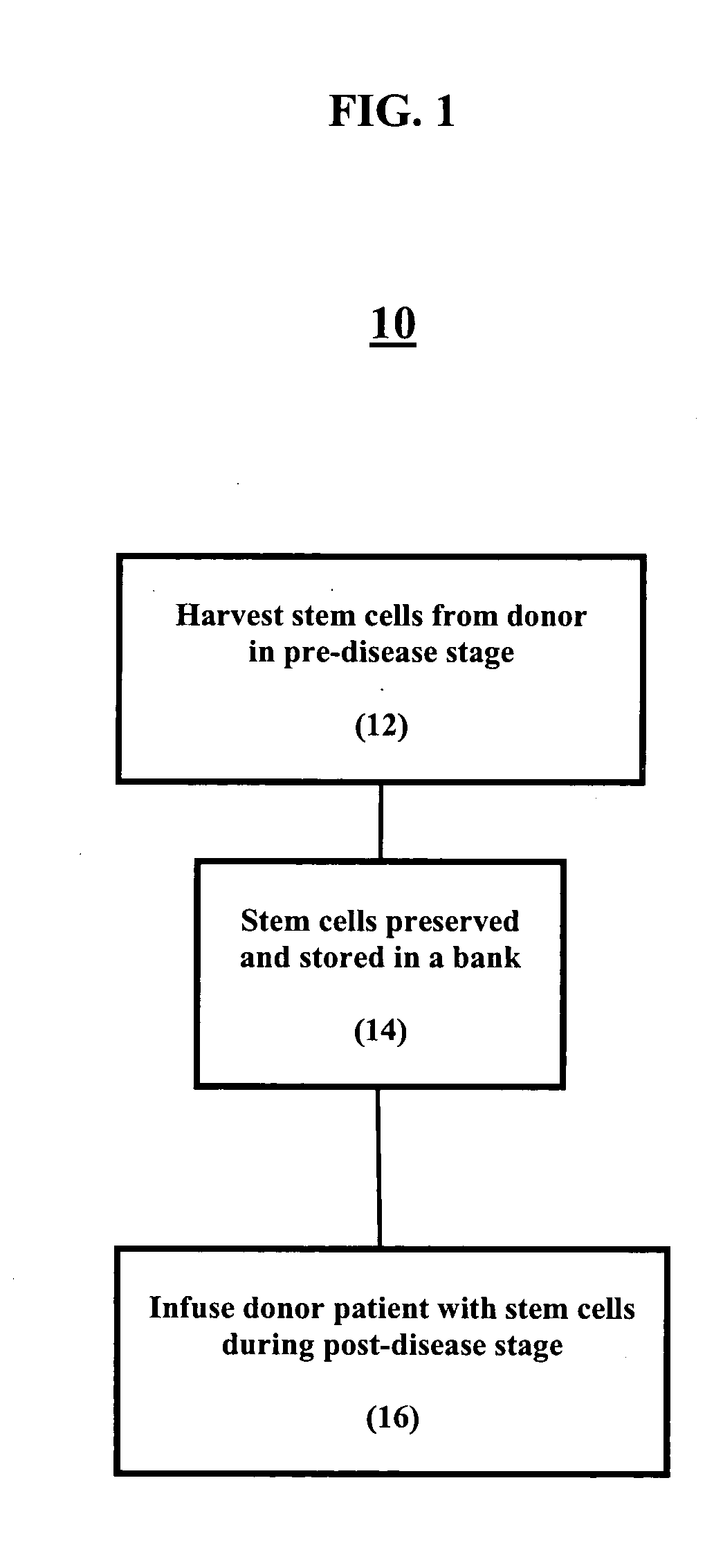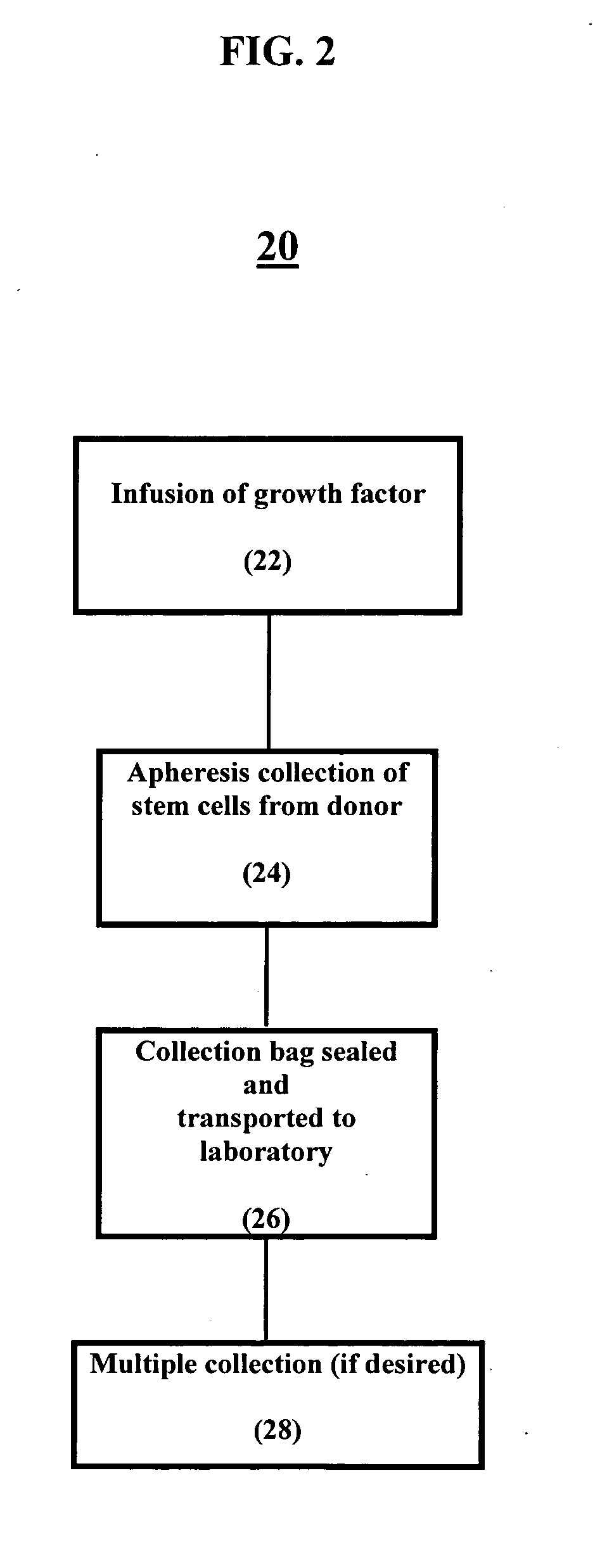Elective collection and banking of autologous peripheral blood stem cells
a technology of autologous peripheral blood and stem cells, applied in the direction of biocide, genetic material ingredients, drug compositions, etc., can solve the problems of limiting the immediate use of these stem cells for some treatments, allogeneic transplantation is much more expensive than autologous transplantation, etc., to reduce the amount of potential complications and quickly detect the effect of rejection
- Summary
- Abstract
- Description
- Claims
- Application Information
AI Technical Summary
Benefits of technology
Problems solved by technology
Method used
Image
Examples
Embodiment Construction
[0064] Thus, in one embodiment of the invention: the stem cells of a non-neonate child or an adult ("person"), while the non-neonate child or adult is in a pre-disease state, are harvested and then preserved (such as cryopreservation). The harvesting (collection) process can be achieved using apheresis. There may be a need to infuse cell growth factors such as Granulocyte Colony Stimulating Factor, 1-6 days prior to the collection. To preserve the stem cells collected for future used, cryopreservation technique and reagent can be used.
[0065] Later (and this may be years later), should the same person develops cancer, an immunodisease, infectious disease, heart disease, brain disease, spiral cord disease, pancreatic disease, hepatic disease or bone marrow disease or undergoes therapy or is exposed to conditions which causes immunosuppression or infection or depletion of his immune cells, then the preserved stem cells or bone marrow are infused into the person to combat the disease. T...
PUM
| Property | Measurement | Unit |
|---|---|---|
| time | aaaaa | aaaaa |
| weight | aaaaa | aaaaa |
| weights | aaaaa | aaaaa |
Abstract
Description
Claims
Application Information
 Login to View More
Login to View More - R&D
- Intellectual Property
- Life Sciences
- Materials
- Tech Scout
- Unparalleled Data Quality
- Higher Quality Content
- 60% Fewer Hallucinations
Browse by: Latest US Patents, China's latest patents, Technical Efficacy Thesaurus, Application Domain, Technology Topic, Popular Technical Reports.
© 2025 PatSnap. All rights reserved.Legal|Privacy policy|Modern Slavery Act Transparency Statement|Sitemap|About US| Contact US: help@patsnap.com



